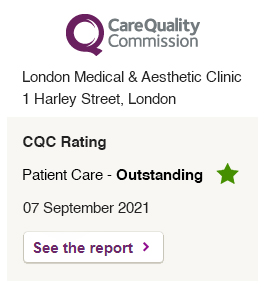A women’s glossy magazine once posed the question: What do you want most, world peace, or a cure for cellulite? Readers were unequivocal in their response – 70 per cent chose the latter.
Of course, it wasn’t an entirely serious survey. But it does hint at how orange-peel thighs can harm a woman’s self-confidence.
About 85 per cent of British women aged over 20 suffer the condition. Fat deposits get trapped and squeezed between the stiffened fibrous bands that connect the skin’s tissues, leading to the dreaded puckered effect on upper and outer thighs and buttocks, and also the stomach and arms.
The phenomenon is larger unrelated to weight, as even slim supermodel Kate Moss has it. Creams, serums, heating and freezing treatments, tights laced with caffeine and a pair of vacuum pump trousers (said to have been used by Cheryl Cole) have all been floated as potential remedies.
And in a recent poll of 1,000 women, more than a third said they would consider undergoing surgery to get rid of their cellulite if they knew it would work.
There was the brutal-sounding subcision surgery, which involves the surgeon making large incisions into the skin and using a V-shaped cutting tool to slice away the offending fibrous bands. But the results are negligible and scarring plentiful.
Indeed, this holy grail of cosmetic medicine has proven largely elusive – until now. Last month, surgeons at the British Association of Aesthetic and Plastic Surgeons conference unveiled a revolutionary procedure that, if reports are to be believed, promises astonishing results. Unlike existing treatments, Cellulaze directly attacks the internal tissues that cause cellulite.
It takes 90 minutes to perform under local anaesthetic, and involves tiny incisions and minimal downtime, with little scarring.
“Many women have asked me for a solution to cellulite but we haven’t had anything to offer which works until now,” says plastic surgeon Mr Hassan Shaaban, of the Sthetix clinic in Liverpool.
In July he became the first surgeon to perform Cellulaze in the UK. However, the procedure is not one to be taken lightly.
First the area to be treated is disinfected with an iodine solution and local anaesthetic is injected. A laser attached to the end of a fine metal tube, known as a cannula, is then inserted into the fatty areas below the skin via tiny incisions to perform three tasks.
‘We point the laser down and emit heat to dissolve the fat and remove any bulges, then we direct it sideways to divide the fibrous bands so that the skin plumps out again, both of which achieve instant result,’ says Shabaan.
“Then we direct the laser upwards to heat the skin and stimulate collagen formation, with optimum results appearing over six to 12 months. Collagen is the main skeleton of the skin, providing tightness and thickness. The temperature of the laser won’t go over a certain level and if it does, it automatically turns off, so it’s very safe. We do not suck anything out but we apply gentle pressure with swabs to absorb the fluid and fractured fat that seeps out.”
Only one treatment is required to elicit what surgeons believe will be a permanent result. A study of 110 Cellulaze US patients revealed there was no deterioration in their results a year after surgery.
The first British woman to undergo the treatment was Justine Chew, 39, who owns a beauty salon in Liverpool. She is married to James, 37, a manager, and has two children, Lydia, nine, and Zak, four. She was treated on July 19.
“I’ve hated my cellulite with a passion for years. The tops of my legs were rippled with dimples and I’ve tried everything to reduce it. I did diets, drank more water, exercised, and bought every cream and “miracle” potion on the market. Nothing worked,” she says.
Mr Hassan mentioned the treatment to her while she was visiting him for Botox anti-wrinkle jabs. Despite it being a new treatment, she was willing to take the risk.
“I immediately wanted it. I’m curious about new treatments. All my female customers, whether a size eight or 18, moan about their cellulite. I’m no stranger to cosmetic procedures as I had a breast augmentation ten years ago, and have regular Botox.”
Like all cosmetic surgery, the procedure isn’t suitable for everyone. ‘If a woman has a skin condition such as psoriasis or eczema she won’t be able to have Cellulaze until it has been treated, as introducing heat underneath the skin will exacerbate any problems,’ says Dr Ayham Al-Ayoubi, of the London Medical & Aesthetic Clinic, who is responsible for bringing the treatment to Britain. ‘Also, cellulite is subject to a grading system and Cellulaze cannot completely get rid of it. Depending on what grade of cellulite a woman has, she can expect to achieve a reduction of two to three levels.’
The most common cellulite grading system is referred to as the Nurenberg scale, named after the German physician who invented it in 1972. Grade one means there is no obvious cellulite when a woman is standing, but if she pinches the skin on the thighs there will be an orange-peel appearance.
Grade two and three each have three variants – mild, moderate and severe – meaning that there are seven levels of cellulite.
Grade two refers to cellulite that’s visible while standing and sitting, and grade three to that which is extremely visible while standing, sitting and lying down.
Less than five per cent of men suffer. They tend to have large, loose, unconnected fat cells that don’t have a lot of blood supply, and don’t develop the fibrous tissues.
Justine’s cellulite was assessed as severe, grade two. ‘I was apprehensive before the operation, but the only pain I felt was the needle with the local anaesthetic jabbing repeatedly into each leg.
‘It wasn’t pleasant, but not unbearable. An area the size of a piece of A4 paper was treated on the back of each thigh and my hip.’
Mr Hassan made four small incisions in each leg – two at the top and two at the bottom – less than half a centimetre under the skin.
‘I couldn’t feel a thing, not even the cutting,’ says Justine. ‘Pink liquid seeped from my legs when the laser was removed and I was told this was a mixture of the anaesthetic solution, fat and a bit of blood. A gauze pad was placed on the cuts which had to be left open to drain the excess fluid. I wore a pressure garment to aid healing.
‘That night, once the anaesthetic had worn off I was uncomfortable, but not in pain. The following day I was fine, though the area was tender to the touch. My thighs looked swollen and red, but with very little bruising.
‘The skin has now lost the dimples, and three months after the operation the texture of my thighs looks fantastically smooth and taut. My husband has said many times what a difference it has made.
‘I’m looking forward to my holiday next year. For years I wouldn’t have dreamt of walking into the water with the backs of my thighs visible. But with my new smooth legs I’ll stand up from a sunlounger without putting a wrap around my dimpled legs. Who would have thought they’d discover a cure for cellulite?
AnchorAnother patient to be thrilled by the results is Michelle Witter, 38, a civil servant from Battersea, who had the treatment in August.
‘I’m a size 10, I eat healthily and go to the gym, yet I still had cellulite on my thighs,’ says Michelle, married with a teenage daughter. ‘I was a size eight until my mid-30s and even then I had it. I was very self-conscious wearing shorts or a bikini.’
Michelle tried every cellulite treatment going, recently spending hundreds of pounds on an expensive infrared treatment which did nothing more than temporarily improve the appearance of her skin. Michelle’s cellulite was also assessed as grade two. Ninety minutes after the operation, she was back at home, the next day she went shopping and a week later she was in the gym.
‘My legs were tender and swollen for a few days,’ she says. ‘I had to wear a compression garment to aid the healing. The incisions from the cannula healed within days and I took antibiotics for a week as a precaution to guard against infection.’
Dr Al-Ayoubi, who carried out Michelle’s operation, predicts the results will continue to improve over the next 12 months.
‘I wasn’t sceptical about the surgery but I didn’t expect the results to be this fantastic. The backs of my thighs are smooth to the touch and there’s barely any cellulite visible.
To view Dr Ayoubi in the media click here.





